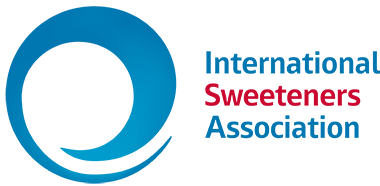Science news from the 55th Annual EASD meeting
Highlights:
- The assertion that by providing sweet taste without calories, low calorie sweeteners may “confuse the brain” and lead to overeating is not supported by scientific evidence
- New studies confirm that the simple narrative of ‘Cephalic Phase Insulin Response’ after intake of low calorie sweeteners, suggesting an insulin release in the first minutes after food consumption, does not hold to close examination
- Overall, research shows that sweetness intensity, i.e. foods with high or low sweetness, does not affect food intake
Low calorie sweeteners are used in place of sugars to provide sweet taste with fewer or zero calories. So, when claims suggesting that, despite the fact that they provide virtually no calorie, they may lead to increased food and energy intake, the proposed mechanisms and the collective evidence should be carefully examined and assessed so as to provide healthcare professionals and the public with accurate scientific information.
Aiming to provide a review of the available evidence about low calorie sweeteners, satiety and food intake, Dr Paul Smeets, Utrecht University, Netherlands, talked about “Low calorie sweeteners and sweet taste: A cause for calorie confusion and overconsumption?” at the recent 55th Annual Meeting of the European Association for the Study of Diabetes (EASD) in Barcelona, Spain, in a session organised by EASD’s Diabetes and Nutrition Study Group (DNSG). He further presented new data from their recent and ongoing work on one of the mechanisms proposed as a potential pathway by which sweeteners could theoretically lead to increased food intake, by eliciting a Cephalic Phase Insulin Response (CPIR). He explained why this hypothesis does not stand to close examination and pointed to results of recent systematic reviews supporting the assertion that, overall, the balance of evidence from human randomised controlled trials indicates that low calorie sweeteners do not increase appetite or energy intake (Bellisle, 2015; Rogers et al, 2016).
The current article aims to help readers understand the hypothesis of eliciting a CPIR and further to discuss the main conclusions of the presentation by Dr Paul Smeets at the recent EASD 2019 Annual Meeting. It will also briefly present the conclusions of talk by Prof Ian Rowland, University of Reading, UK, who talked about “Replacement of sugars with low calorie sweeteners on microbiome and glucose tolerance: Evidence versus headlines”.
What is the ‘Cephalic Phase Insulin Response’ and how is it linked to low calorie sweeteners?
The minute we start eating food, or even before that, i.e. simply by seeing or smelling it, our body already begins sending signals and starts some pre-digestive processes that are called cephalic phase responses. These responses have been said to play an important role in the regulation of food intake and include physiological and endocrine responses such as the release of insulin.
The Cephalic Phase Insulin Response (CPIR) is an early low-level increase in blood insulin associated with only oral exposure, i.e. occurring prior to increasing plasma glucose levels typically seen with intake of foods containing carbohydrates. It has also been hypothesised that stimulation of sweet-taste receptors on the tongue can act as a signal for CPIR as a mechanism by which the body is prepared for the absorption of dietary glucose, even in the absence of carbohydrates. So, since low calorie sweeteners link to, and activate oral sweet-taste receptors, the hypothesis has been put forward that they may elicit an anticipatory insulin release quickly after ingestion, which in turn might decrease blood glucose levels and via this mechanism could lead to an increase in hunger and to overeating (Liang et al. 1987; Dhillon et al. 2017).
Review of scientific evidence
The claim that low calorie sweeteners may elicit CPIR was investigated in a number of studies in the 1990s, which showed no evidence of an increase in insulin after tasting various low calorie sweeteners (Renwick, 1994; Renwick and Molinari, 2010). However, the issue has been raised again after a study published in 2008 (Just et al, 2008), in which blood insulin levels were measured in volunteers who tasted different solutions for 45 seconds. The authors reported that both sucrose and saccharin increased insulin levels during the first 10 min after tasting.
In contrast to these data, no increase in plasma insulin was found in other studies that tested a range of different sweeteners: acesulfame-K (Härtel et al, 1993), aspartame (Härtel et al, 1993; Abdallah et al, 1997; Teff et al, 1997), cyclamate (Härtel et al, 1993), saccharin (Härtel et al, 1993; Teff et al, 1997; Morricone et al, 2000), sucralose (Mezitis et al, 1996; Grotz et al, 2003; Ma et al, 2009; Boyle et al, 2016; Ford et al, 2011; Grotz et al, 2017). In a review of the literature by Mattes and Popkin, the authors concluded that the results combined do not show adequate support to the claim that low calorie sweeteners would stimulate hunger via cephalic phase responses (Mattes and Popkin, 2009).
Additionally, in his talk, Dr Smeets presented outcomes of recent research work conducted by Wageningen and Utrecht Universities in the Netherlands, which showed that CPIR is generally not a meaningful determinant in food desire, hunger or glucose response (Lasschuijt et al, 2017; Lasschuijt et al, 2018). Interestingly, he also discussed preliminary results of an ongoing systematic review and meta-analysis of the human literature on cephalic phase responses (50 papers). Based on their findings, the authors note that cephalic phase responses do not occur consistently and there is much variability in magnitude and onset time. They also note that the physiological relevance of CPIR is debatable and their role in (glucose) homeostasis and satiation is questionable. Overall, Dr Smeets concluded that the CPIR hypothesis is not robust and that the simple CPIR narrative on low calorie sweeteners does not hold up.
In fact, evidence supports the claim that low calorie sweeteners’ intake neither promotes nor suppresses appetite in humans and in many instances, their use is associated with a lower intake of sweet tasting foods, suggesting that low calorie sweeteners may help to satisfy a desire for sweetness and that low calorie sweeteners do not encourage a “sweet tooth” (Bellisle, 2015).
Low calorie sweeteners and gut microbiota
The presentation by Prof Ian Rowland, University of Reading, UK, was also of high interest. Prof Rowland presented outcomes of animal and human studies that have examined the effect of low calorie sweeteners on gut microbiota and discussed the conclusions of a recent review paper by Lobach et al (2019). He concluded that, while frequently discussed in media, current evidence does not support the suggestion that low calorie sweeteners would have an adverse effect on health through having an impact on gut microbiota. He added that in typical levels of low calorie sweeteners consumption in human, it would be unlikely that these would have a clinically meaningful effect on the microbiome.
Prof Ian Rowland was an invited speaker at the ISA Conference 2018 in London. The talk he delivered at the ISA Conference 2018 is available online and you may watch it by clicking here.

